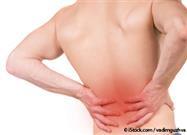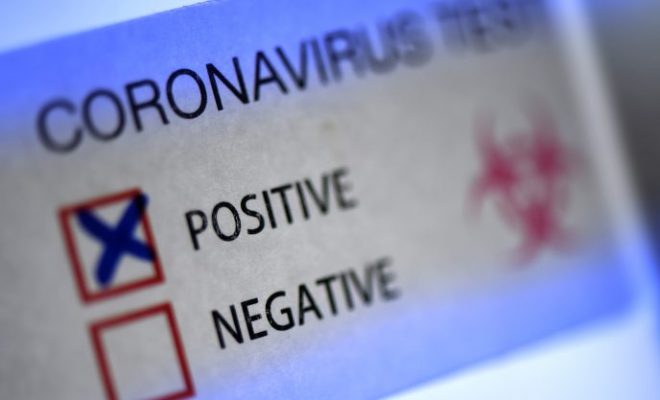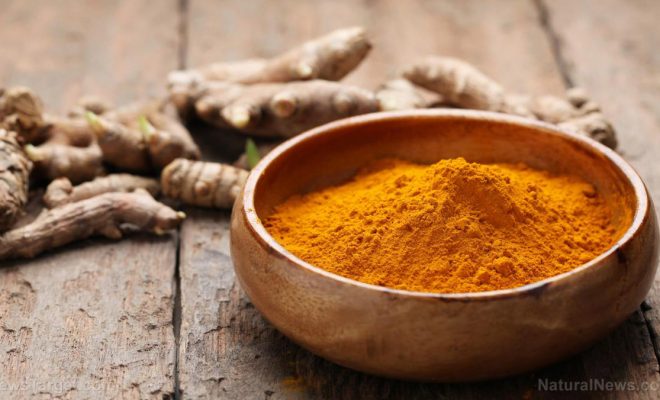Exercise Works Best for Lower Back Pain

Eighty percent of people will experience back pain at some point during their lives. It’s one of the most common health challenges, yet many people fail to find lasting relief, even after seeking medical help.
If you visit a doctor for back pain, you’re likely to receive a prescription as a solution. Acetaminophen (Tylenol) is the recommended first-line drug treatment for back pain, despite the fact that a recent systematic review and meta-analysis found it to be ineffective for this purpose.1
Chris Maher, a physical therapist and researcher at the University of Sydney in Australia told NPR:2
“We’ve got this perverse incentive in our health care system where we encourage people to innovate in terms of drugs, but we don’t have the same system to get people to innovate in terms of physical activity.”
Perhaps if we did, there would be a lot fewer people struggling with chronic back pain.
Exercise Works for Reducing Your Risk of Back Pain
Maher and colleagues reviewed 21 studies, which included more than 30,000 people, to determine what really works for preventing low back pain. Commonly recommended back belts and shoe insoles didn’t help but exercise did.3
Among people who had experienced back pain, those who exercised had a 25 percent to 40 percent lower risk of having another episode within a year than those who did no exercise.
Further, the type of exercise didn’t seem to matter. Strength exercises, aerobics, flexibility training and stretching were all beneficial in lowering the risk of back pain. This makes sense since your body needs regular activity to remain pain-free.
For example, when you sit for long periods of time, you typically end up shortening your iliacus, psoas, and quadratus lumborum muscles that connect from your lumbar region to the top of your femur and pelvis.
When these muscles are chronically short, it can cause severe pain when you stand up as they will effectively pull your lower back (lumbar) forward.
Imbalance among the anterior and posterior chains of muscles leads to many of the physical pains you experience. By rebalancing and strengthening these muscles, you can remedy many pains and discomforts, including low back pain and similar pains, like neck pain.
In one study of neck-pain patients, for instance, 30 percent of those who exercised became pain-free compared to just 13 percent of those treated with medication.4
Motor Control Exercise May Help Reduce Lower-Back Pain
While virtually any type of exercise may be beneficial for most low back pain, there’s one type in particular that’s worth giving a try, especially if your back pain is recurrent or chronic — motor control exercise (MCE).
MCE exercises help to improve coordination of muscles that support your spine.5 As noted in The Cochrane Database of Systematic Reviews:6
“MCE intervention focuses on the activation of the deep trunk muscles and targets the restoration of control and co-ordination of these muscles, progressing to more complex and functional tasks integrating the activation of deep and global trunk muscles.”
The systematic review found MCE led to reductions in pain and disability and improvements in perceived quality of life compared with minimal intervention. That being said, MCE wasn’t necessarily better than other forms of exercise, so you’re free to choose whatever activities you prefer.
Bruno Saragiotto, a physiotherapist from The George Institute, University of Sydney in Australia, told Medical News Today:
“Targeting the strength and coordination of muscles that support the spine through motor control exercise offers an alternative approach to treating lower back pain.
We can be confident that they are as effective as other types of exercise, so the choice of exercise should take into account factors such as patient or therapist preferences, cost and availability.”
What Are Motor Control Exercises?
Motor control is your ability to direct and regulate movement.7 Since motor control starts in your brain, the idea behind motor control exercise for low back pain is to re-teach your brain how to coordinate and control your trunk muscles.
In people with low back pain, it’s thought that the ability to properly control these muscles has been lost or is malfunctioning, ultimately leading to pain and functional disability.
Motor control exercises are not like a typical gym workout; they teach you how to isolate and “switch on” certain muscles, then incorporate the related movements into your daily activities. In most cases, you’ll start with a physical therapist who can identify which muscles are a problem for you.8
The therapist will then work with you to control the muscles in simple postures; at first this is typically done while lying down. For instance, you may be asked to lie on your side and then draw your lower abdomen in toward your spine.
The therapist will then work with you until you’re able to use the proper muscles to correctly draw in your abdomen, a prerequisite to moving on to more challenging activities.9
Once that is mastered, you’ll move on to learning how to control and properly use certain muscles while standing, walking and engaging in more complex functional activities.10
Staying Active Is the Opposite of Sitting
It’s not surprising that exercise may help rid you of back pain, or that the type of exercise seems to be less important than the mere act of staying active. Pilates is another example.
A Cochrane systematic review found that Pilates was more effective in relieving back pain and disability than minimal intervention, although it’s not necessarily superior to other exercises.11 What most types of exercise have in common is that they keep you up and active instead of sitting and sedentary.
Sitting puts more pressure on your spine than standing, and the toll on your back health is even worse if you’re sitting hunched in front of a computer. It’s estimated that 40 percent of people with back pain have spent long hours at their computer each day.
The disks in your back are meant to expand and contract as you move, which allows them to absorb blood and nutrients. When you sit, the disks are compressed and can lose flexibility over time. Sitting excessively can also increase your risk of herniated disks.
Also it is important to recognize that continuous standing can also be problematic. The key is movement. I am very fond of Katy Bowman’s teaching in which she encourages people to exercise less and move more. Personally, after I reduced my normal 12 to 14 hours of daily sitting to under one hour, the back pain I’d struggled with for decades disappeared. I seek to move away from my desk several times an hour.
Unless you are sleeping it is important to avoid bed rest, even though your initial urge when back pain strikes may be to lie down on the couch. NPR reported:12
“What everyone can agree on is this: Above all, avoid rest. ‘What we do understand about the back it that the more you use it, the more likely you are to keep it strong, fit and healthy,’ says Maher [the physical therapist who worked on the featured study].”
If you want to get started staying active, see Lisa Huck’s 3-Dimensional Dynamic Movement Techniques, as explained and demonstrated in the video below. They help with creating and maintaining a balance between stability and mobility, as well as boost your body’s ability to move efficiently and resiliently on all planes.
Have You Tried These Exercises to Relieve Your Back Pain?
Sometimes back pain occurs suddenly, seemingly out of nowhere, but oftentimes it occurs only after months or years of poor posture, repetitive motions, improper lifting, tension and strains. In addition to stopping the offending movements (for instance, swapping out your desk chair for a standing desk), the following forms of exercise may help:
Stretching
Participants who took 52-minute stretching classes (which emphasized trunk and leg stretches) received as much back-pain relief as those taking yoga classes.13 The way you stretch matters, however, and static stretching may actually lead to irritation and injury.
A better option is the Egoscue Method, which is a series of very specific posture stretches and special exercises tailored to each person’s specific needs. Egoscue helps to restore muscular balance and skeletal alignment and is often used as a natural method of pain relief.
Strength Training
A regular strength-training routine will help strengthen your back and core muscles, which is essential for both relieving pain and preventing injury.
Yoga
Yoga, which is particularly useful for promoting flexibility and core muscles, has been proven to be beneficial if you suffer from back pain.
People suffering from low-back pain who took one yoga class a week had greater improvements in function than those receiving medicine or physical therapy.14 The Yoga Journal has an online page demonstrating specific poses that may be helpful.15
Tai Chi
A form of Chinese martial arts, tai chi is an ancient form of self-defense that is said to support the balance of “yin and yang” in your body, thereby improving the flow of “qi,” or life energy.
Often described as “meditation in motion” or “moving meditation,” the activity takes your body through a specific set of graceful movements. Your body is constantly in motion and each movement flows right into the next. A 10-week tai chi program has been found to improve pain and disability in people with persistent low-back pain.16
Does Your Back Pain Have a Psychological Origin?
Few people want to be told that their pain is psychological or emotional in origin, but there’s quite a bit of evidence that backs this up. One theory is that emotional trauma (along with physical injury and environmental toxins) may stimulate molecules in your central nervous system called microglia.
These molecules release inflammatory chemicals when stressed, resulting in chronic pain and psychological disorders like anxiety and depression. Dr. John Sarno, for example, used mind-body techniques to treat patients with severe low back pain and has authored a number of books on this topic.17 He coined a name for psychosomatic pain syndrome: tension myoneural syndrome (TMS).18
In short, as your mind is flooded with negative emotions, one of the ways your brain may cope is by substituting physical pain for emotional pain. Dr. Sarno’s specialty was those who have already had surgery for low back pain and did not get any relief (a common outcome).
This is one tough group of patients, yet he had a greater than 80 percent success rate using techniques like the Emotional Freedom Techniques (EFT), which is demonstrated in the video below, and forgiveness. There are other mind-body techniques that may relieve your back pain as well. Many of Dr. Sarno’s concepts have formed the foundation of what Dr. David Hanscom, an orthopedic surgeon, teaches.
He believes neurophysiological disorder (NPD) is an outgrowth of chronic stress and anxiety, causing your nervoussystem to be flooded with adrenaline and cortisol. Many chronic pains,including back pain, may be rooted in NPD. Dr. Hanscom recommends expressive writing, where you write down yournegative thoughts, to break up the psychological pathways of anxiety andfrustration, allowing you to reprogram your brain and release physical pain.
Other mind-body techniques, like meditation, can also help. Among volunteers who had never meditated before, those who attended four 20-minute classes to learn a meditation technique called focused attention (a form of mindfulness meditation), experienced significant pain relief — a 40 percent reduction in pain intensity and a 57 percent reduction in pain unpleasantness.19








